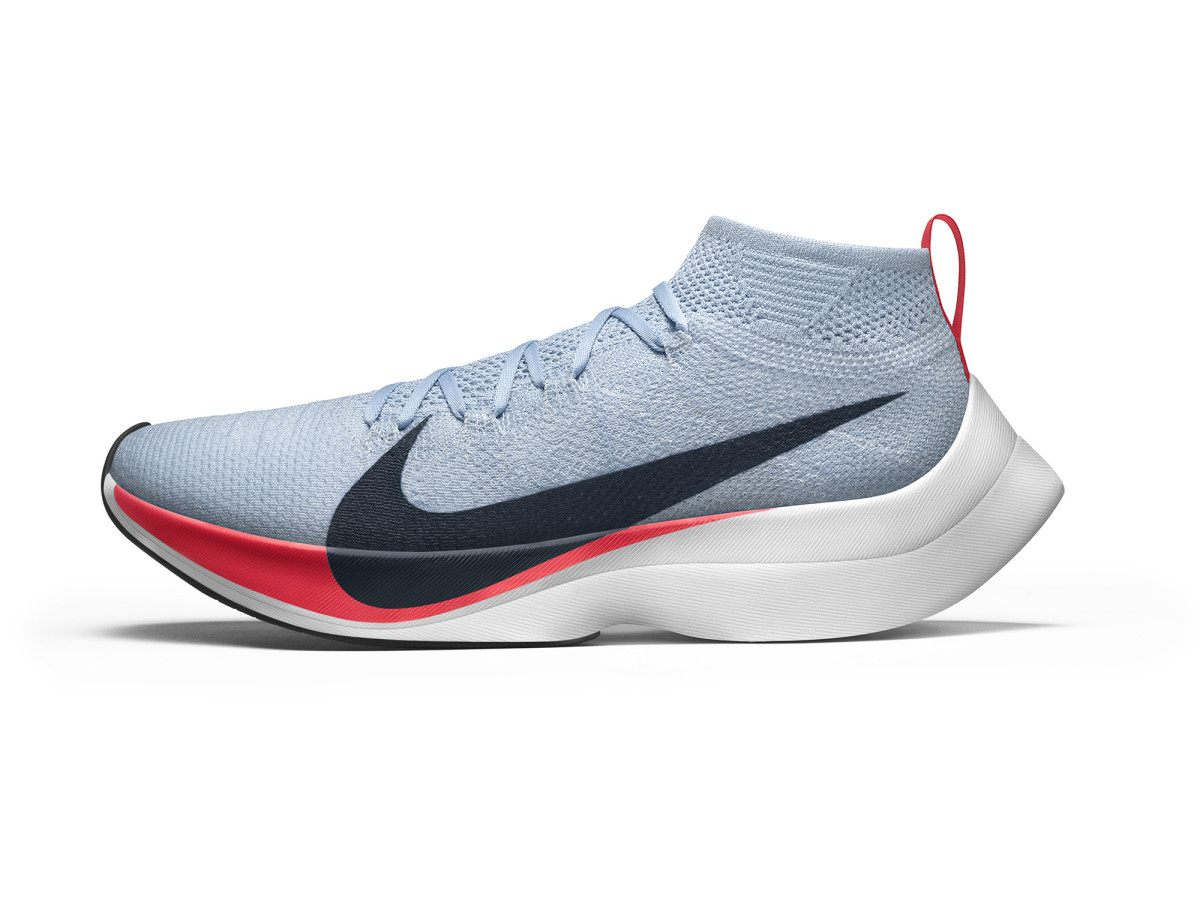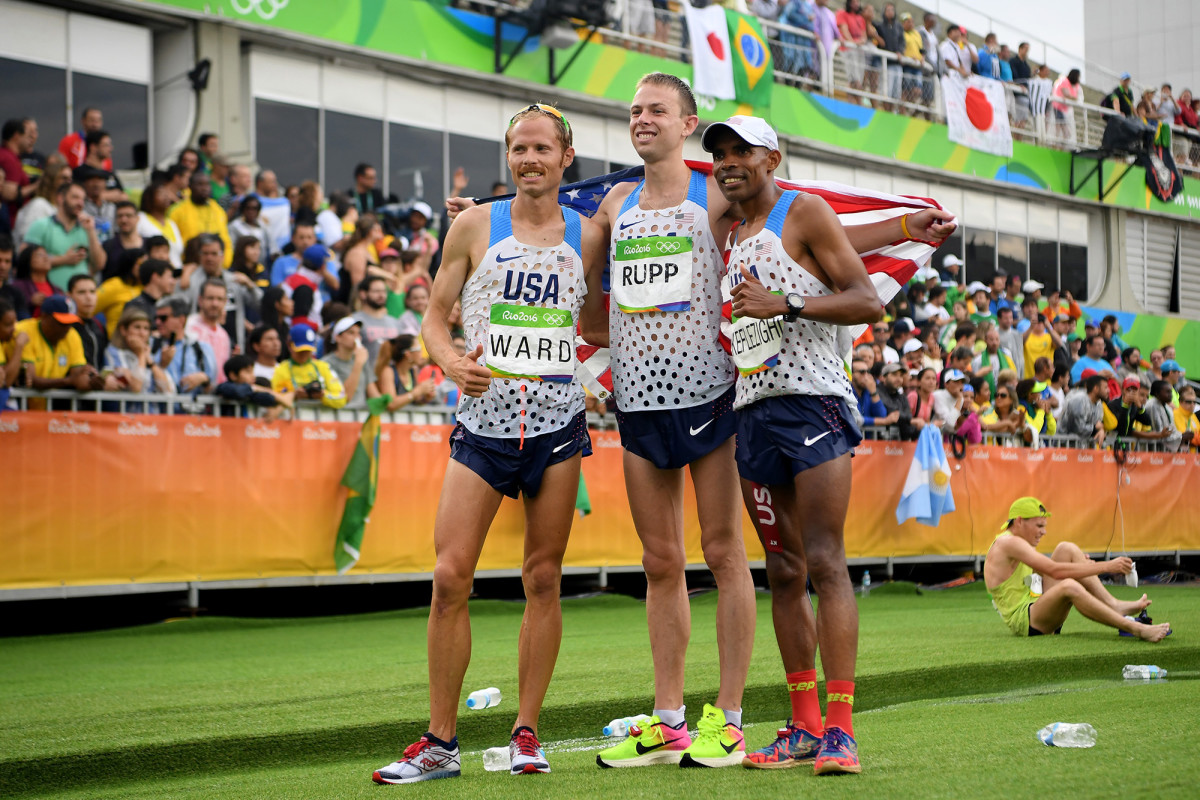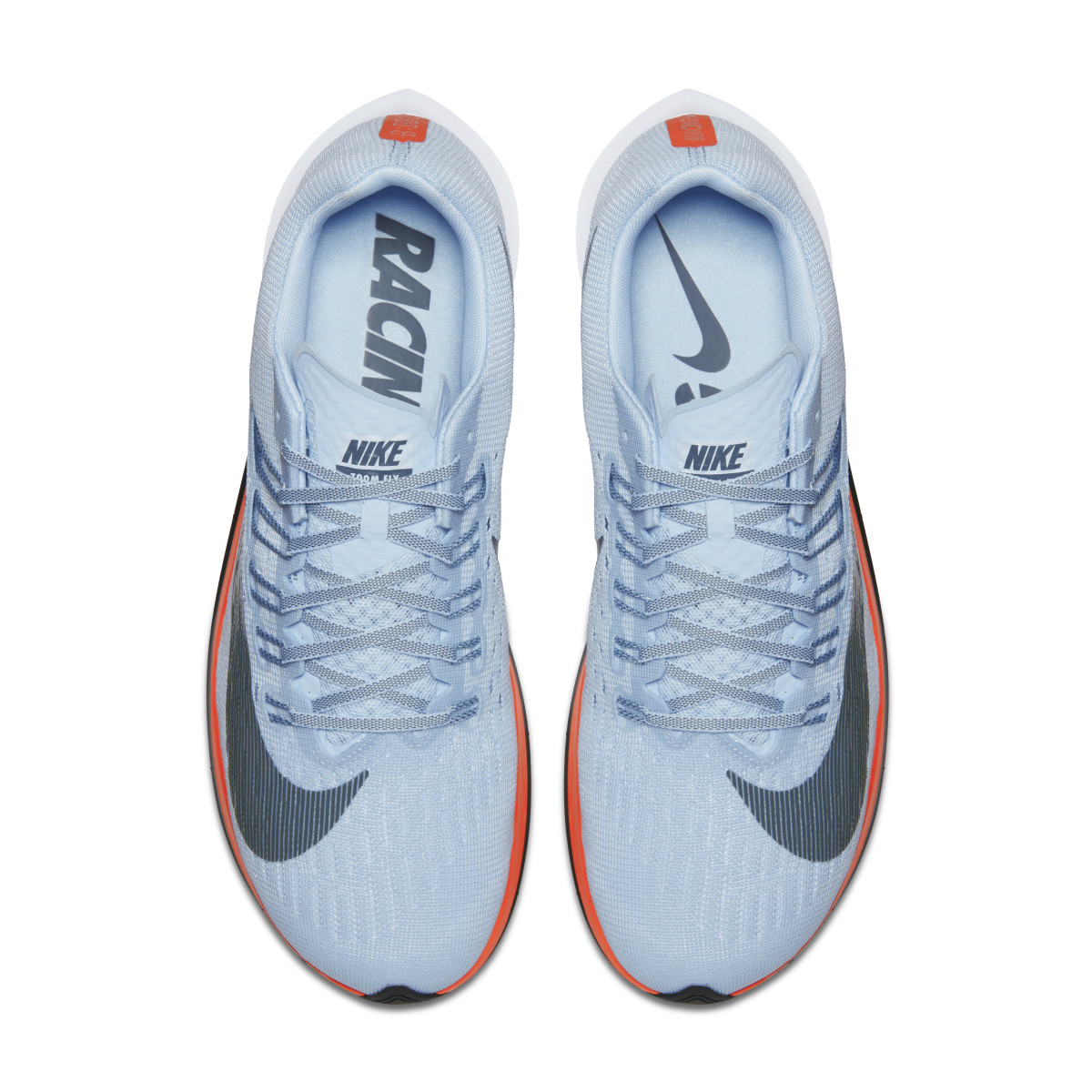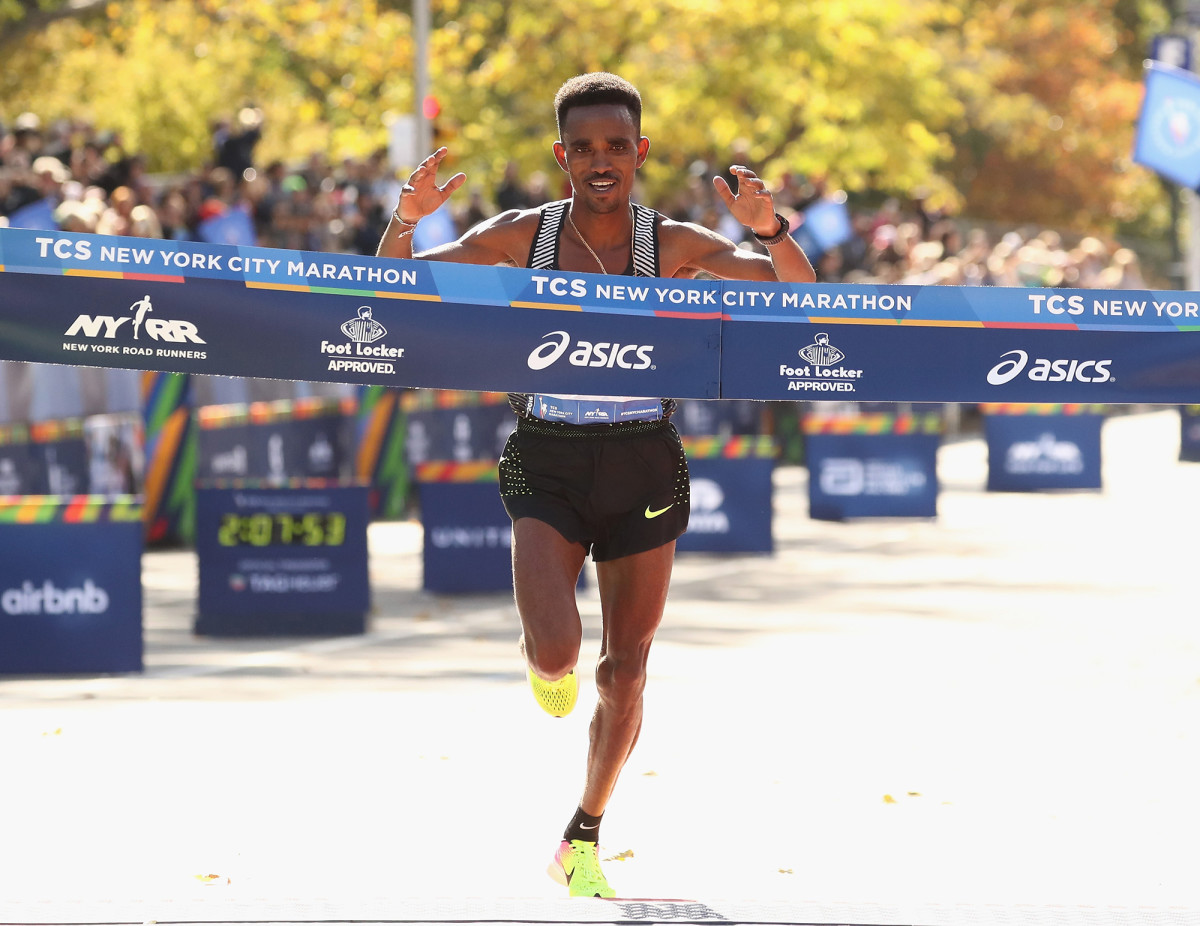Nike unveils Zoom Vaporfly Elite, Vaporfly 4% for optimistic sub-two hour marathon attempt

Pacing cars. Lights. Super shoes. Pacers.
These are just some of the elements that Nike will test this week in Milan as its attempt to break the two-hour marathon is slated to take place on a Formula 1 track in May.
One of the integral parts of the experiment will be the footwear on Olympic gold medalist Eliud Kipchoge of Kenya, two-time Boston Marathon champion Lelisa Desisa of Ethiopia and half-marathon world record holder Zersenay Tadese. The three men have opted to bypass the lucrative spring marathons like Boston or London to join Nike’s efforts to break the two-hour marathon. The Breaking2 is set to take place on a 2.4-kilometer loop combining portions of the Grand Prix track and junior track of the Autodromo Nazionale Monza complex outside Monza, Italy.
A sub-two hour marathon arms (err, legs) race is underway, Nike announced its Breaking2 project in January and just two weeks ago, Adidas unveiled its shoe aimed to break the two-hour mark. Both companies point at 2012 as the start of their respective projects.
Adidas unveils its new Sub2 marathon shoe ahead of Tokyo Marathon
“We started with the idea of how can we make someone 3% faster,” says, Bret Schoolmeester Nike’s senior director of global running. “The idea there is that 3% is the difference between the current world record and sub-2. We wanted to make the shoes a lighter weight. We also wanted to make them return more energy and aerodynamic.”
Adidas started it’s own sub-two hour marathon shoe plans by revisiting previous world-record setting shoes and touching up certain spots that could lead to a new world record or sub-two hour marathon. A Nike athlete has not run a world record in the men’s marathon since Paul Tergat in 2003. The technology and model that they are basing their Breaking2 project around it totally new.
The first idea that Nike had was some sort of track spike for the marathon but those plans were scrapped when they got feedback from the athletes. The pain of pounding on concrete during road races was their main concern. The developers at Nike concluded that in order to return more energy, they need to store more energy for the later parts of a race so they decided to build up on the shoe, and soon, the Vaporfly was born.
Introducing the Nike Zoom Vaporfly Elite

Just days after Adidas debuted its Sub2 shoe, Nike showed Sports Illustrated a concept car for their Breaking2 project’s own shoe. The shoe is the Nike Zoom Vaporfly Elite and will not be available for retail. It is just being individualized for the three athletes that will attempt to break the two-hour marathon later this spring.
The shoe that will be used by the athletes in the Breaking2 Project has a much higher stack than that of the low-top Adidas Sub2 shoe. Nike lists the shoe with a 21 millimeter stack height with a 9 millimeter offset.
Kipchoge, the Olympic marathon champion with a personal best of 2:03:05, got his first look at an early Vaporfly prototype while training in Kenya and emailed back the Nike team: “It seems very high. What are you thinking?”
Another one of the most visible characteristics is the amount of cushioning. One of the major breakthroughs for Nike’s new shoe was the creation and addition of ZoomX foam, which is ⅓ the weight of the Cushlon foam that is found in many of their previous running shoes and ZoomX returns 13% more energy. It is different from EVA foam, another common foam found in other shoes, but Nike would not disclose the the new foam’s creation process or material.
For aerodynamic sculpting, the shoe has a Flyknit upper, which pulls from the technology that made lightweight knitted shoes popular from the 2012 Olympic marathon. There are still some tweaks being made to the outsole pattern on the Vaporfly Elite.

Similar to the plates that are at the bottom of track spikes, Nike wanted to explore the element of stiffness in shoes. The stiffness in track spikes helps with the efficiency of speed. Making shoes stiffer can sometimes shift the workload while running from the metatarsophalangeal joint (or MTP, the joints of the toes) to the ankle or calf. Upon Nike’s announcement of the Breaking2 project, several people took to social media and speculated about a spring in the shoe. There is no spring but the Nike Zoom Vaporfly Elite shoe has a very lightweight but stiff carbon fiber plate. Due to the scooped-shape and geometry of the plate, it does not increase workload on the ankle.
“This is a big part of what makes the shoe work,” Schoolmeester says. “The synergy between these benefits is what really makes the magic. If we weren’t able to have the high stack, we wouldn’t be able to have as much energy stored or returned. If we weren’t doing that, we wouldn’t have as much protection from the road. Without that extreme height, we wouldn’t be able to hide this plate inside of there so cleanly. All of it works together in a really harmonious way to deliver a benefit.”

As for those patents for a spring that were found online? Schoolmeester noted the patent was for another future-thinking project that is disconnected from Breaking2.
The Nike Zoom Vaporfly Elite, which will be worn by Kipchoge, Disesa and Tadese, will be different for all three of the athletes that are participating in the Breaking2 attempt. All shoes will likely weigh under 200 grams.
Vaporfly Elite Testing on the three individual athletes saw an increased benefit on top of what they see with the Vaporfly 4%. Nike has yet to put a number on that benefit.
The results from the lab
In late 2015, internal wear testers started showing impressive results on protoypes and so Nike decided not to keep the benefit from its athletes. The company started passing along the Nike Zoom Vaporfly 4% to runners at the 2016 U.S. Olympic Marathon Trials in Los Angeles, where the top three finishers in the men’s and women’s races would qualify for the Olympics in Rio de Janeiro.
The shoes got their name after they were sent to an outside lab, where Dr. Rodger Kram of the University of Colorado’s Department of Integrative Physiology, determined that a runner wearing the shoe used 4% less energy to run at the same pace as the Nike Zoom Streak 6.
The Vaporfly 4% was given to Galen Rupp, the 2012 Olympic silver medalist at 10,000 meters who was about make his marathon debut. He adopted the shoe with limited time before the race and ended up winning in 2:11:13. Meb Keflezighi and Jared Ward took the next two spots wearing Sketchers and Saucony shoes, respectively. On the women’s side, Amy Cragg signed with Nike just two months before the trials and won the women’s race in 2:28:20 while wearing the Vaporfly 4%. Desi Linden took second in Brooks. Shalane Flanagan, the 2012 Olympic trials champion, held onto third place in the shoes to qualify for her fourth Olympic team.
“[Shalane] tells us she has stress dreams waking up that someone is taking the shoes away,” Schoolmeester says. “She loves them that much that she wakes up panicked that she’s not going to have the shoes anymore.”

Nike has passed along the shoe to many more of its elite athletes and the results have arguably made it difficult for other companies to win major marathons without the Vaporfly 4%. Since the trials, the following is a list of the men’s World Marathon Majors, the winners and the shoes worn:
2016 Boston Marathon - Lemi Berhanu Hayle, Adidas Adios Boost
2016 London Marathon - Eliud Kipchoge, Nike Zoom Vaporfly 4%
2016 Berlin Marathon - Kenenisa Bekele, Nike Zoom Vaporfly 4%
2016 Chicago Marathon - Abel Kirui, Nike Zoom Vaporfly 4%
2016 New York City Marathon - Ghirmay Ghebreslassie, Nike Zoom Vaporfly 4%
2017 Tokyo Marathon - Wilson Kipsang, Adidas adizero Sub2 Boost
Several other athletes including Abdi Abdirahman (third at the 2016 NYC Marathon), Mo Farah (Great North Run winner), Jordan Hasay (USA 10-mile champion) have races in the Zoom Vaporfly 4%. Bekele also wore the shoes in his world record attempt at the 2017 Dubai Marathon but dropped out of the race due to injury.
The shoes also yielded medals for Nike athletes at the Summer Games in Rio. Kipchoge, Feyisa Lilesa (Ethiopia) and Rupp swept the men’s medals in the marathon. Nike athletes also swept the women’s podium but none were wearing the Vaporfly 4%. Flanagan and Cragg took sixth and ninth while racing in the shoes in Rio.
The Nike Zoom Vaporfly 4% will be available for retail on June 8 for $250. In addition to a new Nike Pegasus, the Nike Zoom Fly (10mm offsite), an alternative shoe for casual marathoners and distance runners, also hits stores on June 8 and has a $150 price tag.
Does running really hurt your knees or can it actually be beneficial?
Along with the mystery and intrigue behind Nike’s Breaking2 project, there have been concerns from the public that the shoes or course may not be legal. The International Association of Athletics Federation, track and field’s governing body, was on site for a course inspection and is working with Nike on course ratification and drug testing protocol.
“There’s no concern on our end that we’re breaking any rules,” Schoolmeester says. “Shoes have used foam and plates for decades. We’re not doing anything to stray from that. We’re just using better materials and better geometry. There should be no reason for this to be declared illegal based on our understanding of the rules.”
